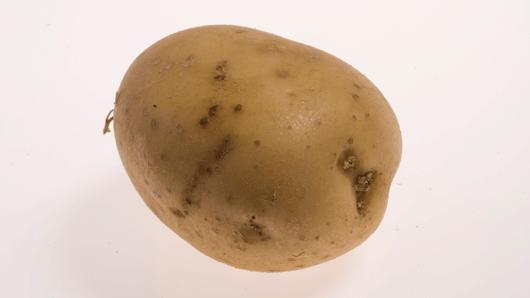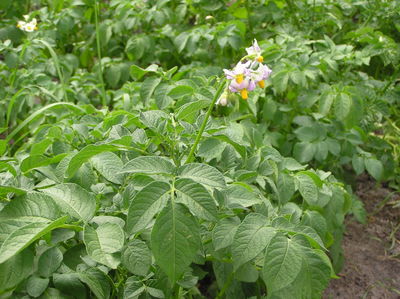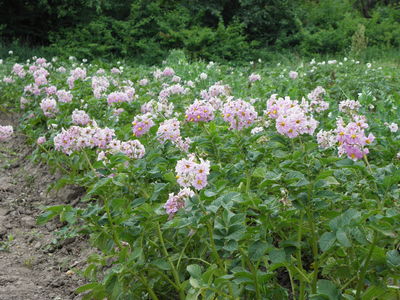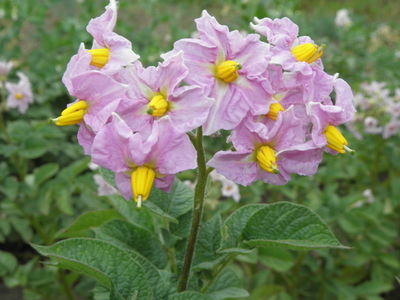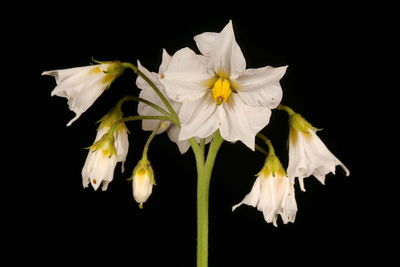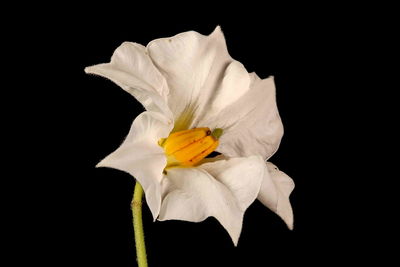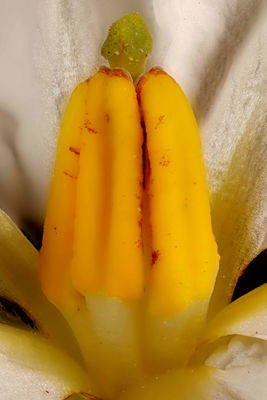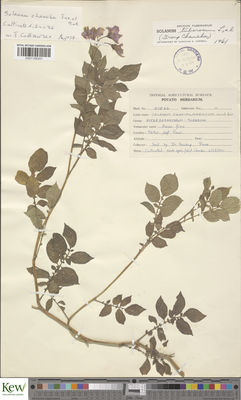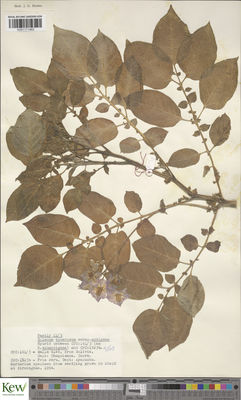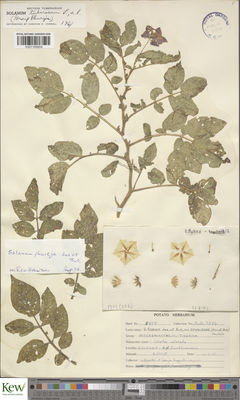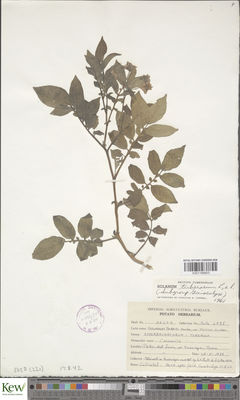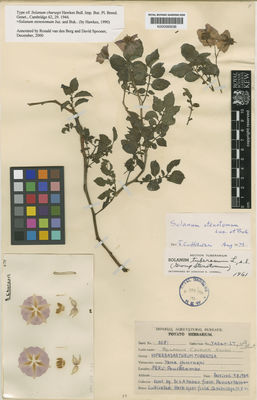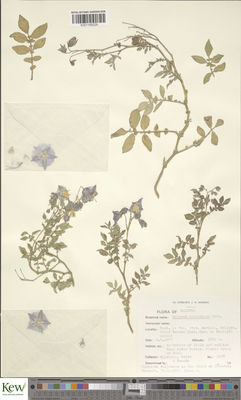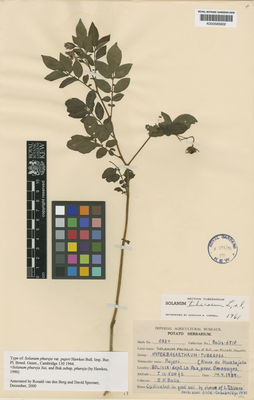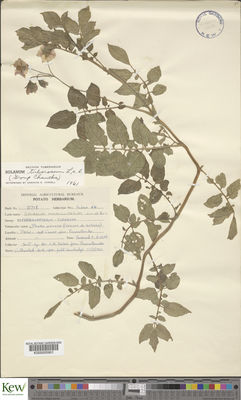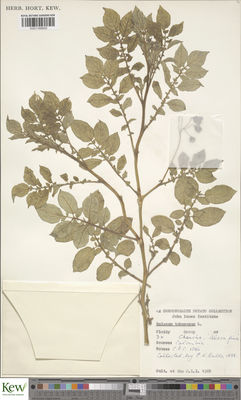Geography and distribution
Solanum tuberosum is thought to have originated in the Andes of South America. It was probably first domesticated in the Lake Titicaca region of Peru and Bolivia between 10,000 and 7,000 years ago.
It is widespread in cultivation, with major producers including China, Russia, Poland, the USA, Ukraine, Germany and India.
Overview: An erect, perennial, aromatic herb up to 1 m tall. Sparsely hairy, with tuber-bearing underground stolons (vegetative shoots). Stems erect, succulent, winged, branching.
Leaves: Divided into 3-5 pairs of leaflets.
Flowers: White to pink, purple or blue, about 2.5 cm in diameter with yellow anthers. Borne in a many-flowered, axillary inflorescence. Each flower is borne on a flower stalk (pedicel) 2-3 cm long.
Fruits: A succulent (but inedible), spherical, yellow-green to purple berry, up to 4 cm in diameter.
Thousands of cultivars are available, which vary in characters such as tuber size, shape and skin colour.
Uses
Potatoes are a major staple and have a prominent place in many national cuisines. They are an almost complete foodstuff, providing all the essential nutrients, with the exception of calcium and vitamins A and D (which can be obtained by consuming them with milk).
Potatoes are a good source of carbohydrate and vitamin C and provide about 25% of the vitamin C in the European diet.
The diverse and adaptable tubers are boiled, roasted, baked, fried and steamed as a vegetable. Potatoes are a key ingredient in many soups, stews, pies and other oven-baked dishes.
They are processed into a diverse range of foodstuffs including chips (French fries), crisps (chips), potato bread (such as boxty), potato flour and dried potato. They are a common source of starch, glucose and dextrin.
Potatoes have long been frozen, soaked and dried to form a product known as chuño, which has played an important role in the diet of the population of the highland and lowland Andes of South America.
Potatoes are used to produce alcoholic beverages including vodka and schnapps. They are also used as animal feed.
All green parts of the plant, including tubers, that have been exposed to light contain poisonous glycoalkaloids (solanines), so tubers with green patches should not be eaten. Overconsumption of solanine by pregnant women is alleged to promote spina bifida in babies.
This species at Kew
Dried and alcohol-preserved specimens of Solanum tuberosum are held in Kew's Herbarium where they are available to researchers by appointment. Details of some of these specimens can be seen online in Kew's Herbarium Catalogue.
Models of various potatoes, samples of potato starch, dextrin, tubers, potato flour, fruits, rice paper made with potato flour, and non-perishable food made from tubers are held in Kew's Economic Botany Collection in the Sir Joseph Banks Building, where they are available to researchers by appointment.

